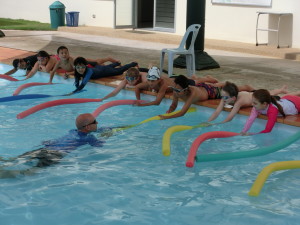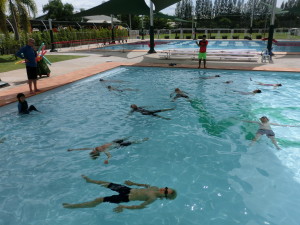Who We Are
In this unit, the students explore belief systems from around the world both in the classroom and in P.E lessons.
Central Idea: Beliefs and values can shape people’s identity
Key Concepts: Connection, perspective, reflection Related Concepts: Physical benefits, Meditation
Lines of Inquiry: 1. The ways people identify themselves. 2.How values and beliefs influence the ways people behave. 3. How reflection shapes our beliefs and values.
To begin tuning in to this unit, we started with a class discussion about the students inquiries in their classroom. Students initially talked about various religions that they either believe in themselves or know about, we talked about those belief systems (religions) and what they stood for. We then discussed the central idea, key and related concepts and lines of inquiry which helped to generate ideas and thoughts leading to the key question for the unit: How can beliefs and values shape the way people are physically active? I instructed the students that this would be our focus for the unit of inquiry and then asked a more direct question: What does society nowadays believe about physical activity and exercise? This led to a discussion about living a healthy lifestyle, exercising, keeping fit and people using the gym which then led to our first learning experience, a circuit training workout session.
Students worked in pairs to complete a 1 minute workout followed by a 30 second break.
Following the work-out we discussed the future weeks of this unit and that we wanted to make inquiries to answer the question, How can beliefs and values shape the way people are physically active? We discussed how we just completed a work-out session as a way to physically maintain a healthy lifestyle (because that’s a belief held by many in society nowadays). Therefore, in P.E we would continue to undertake physical engagements related to belief systems however in swimming, I would teach the students a number of lifeguard/life saving skills, because I believe all students should have some knowledge and skills to help save someone if they are in trouble when swimming. (Photos of these swimming sessions can be found at the end of this post).
I then reconnected back to the previous discussions and asked, Do any of the religions we discussed earlier practice any type of physical activity/exercise? Did they create any? I informed the students that I was giving them a homework challenge, to try and make a personal inquiry to answer the above questions. To help (and make it a little fun) I asked, Did any religions start any sports/exercises? Did Buddhists invent basketball? Did Christians create cricket? Did Hinu’s start hockey first? The students found it a little amusing but it was something that I hoped would stick with the students, who might take the initiative to inquire…..and some did.
Learning Experiences (Weeks 2-4)
Tai Chi – Week 2
In our next lesson, I immediately began with the homework task that was set, Did any religions start any sports/exercises? A number of students had undertaken the challenge and came away with a similar finding, Yoga. The students had made inquiries with their parents and friends and discovered that yoga has origins in Buddhism and Hinduism and one student was eager to share that her mother was a yoga instructor who was more than happy to come in and lead a yoga session for the class. The students were quite excited by this but I explained we would have to organize this for a future lesson. In the mean time, I explained how I had made my own inquiries and discovered the discipline of Tai Chi and it’s origins relating back to the study of Taoism. To help explain this, I conducted a quick shared reading activity. (Cut story in to paragraphs for 5 different students to real aloud).
Here is another link for the text (MS Word): Taoism + Tai Chi
We then undertook our first session of Tai Chi. I explained to the students that because I was not a Tai Chi instructor, I would be using video instructors to help run these sessions. The first video is quite a good one because the instructor explains the names of the movements and helps to connect physical activity back to the Taoists beliefs in nature and natural things.
video 1 – Daily Tai Chi – https://www.youtube.com/watch?v=PNtWqDxwwMg
Here are some photos of my students following along to the first video
Following this video we had a discussion about the actions and listed the names of the movements and benefits of Tai Chi on the unit poster. We then undertook a second video session, this one a little quicker and more dynamic than the first.
video 2 – Tai Chi for beginners – https://www.youtube.com/watch?v=EOPHsY0FnlE
Here is a video of my class in action
I finished this session with a final discussion about the students thoughts/feelings in relation to the learning experiences and the majority of the feedback was positive, they enjoyed it. I explained that in P.E we would be doing another of these sessions before our yoga lesson with a real life instructor and in swimming, we would continue with our lifeguard/life saving skills activities.
Qigong – Week 3
I began this session by reviewing the videos from the previous two weeks, so the students could undertake those exercises once more before moving on to another discipline. Following the first two videos, I conducted another shared reading activity with the group that led to this weeks learning experience, Qigong, an extension of Tai Chi.
Here is another link to the text (MS Word): What is Qigong
Here is a video of my class in action
We finished the session with a final discussion about the learning experience and the connections between belief systems and the physical activities undertaken, as well as the health related benefits associated with Qigong.
Yoga – Week 4
I met with one of our parents, Sabine and we discussed the unit before she came to conduct a yoga session with the class. Sabine made efforts to begin the session making connections to belief systems such as Buddhism and Hinduism and also made connections back to our previous learning experiences and the connection to nature. Following this, she led the students through a series of basic yoga poses and movements, many with connections to nature.
All students stretching and warming up The Archer Stance
Another activity she ran was called Yoga Freeze, where students move around the room to music and when the music stops, Sabine called out one of the poses she taught earlier for the students to demonstrate.
The final activity was one Sabine uses for a little more movement and fun
Summative Assessment (Weeks 5-6)
Practical
To introduce the Summative Assessment Task for the unit, I reflected on our swimming sessions and reminded students that I had decided to teach the class some swimming survival techniques because I believe having that knowledge and expertise could potentially save someones life (these photos can still be found below). I then informed the students that in a similar way to myself, they would create their own belief statement in relation to exercising. Some students began to express ideas like they believed exercising should be fun and playing or short and simple whilst others believed exercising should be strenuous, challenging and “Hardcore!”
Once the students had established a belief statement for themselves, they were asked to create exercises that matched their statements. If they believed exercising should be fun, their exercises were to be fun etc. They were informed they could use any equipment in the gym but had to check with a teacher before using any weights. Students worked in pairs and small groups to share ideas but they were instructed that they needed to create their own exercises. The class agreed on creating 3 exercises and they needed to demonstrate each exercise for about 10-20 seconds in order for their peers to learn and understand.
In the final lesson (week 6), the students worked individually this time to refine and practice their exercises because they were going to demonstrate their exercises to a peer who would video record them as they presented. These exercise videos were later edited together to create a Grade 4 Exercise DVD connected to their own beliefs about sport and exercising. Below is a video of one of a students who believes that exercising should be hardcore!
Here is another one intended to be more fun and challenging
Written
The written component for all of our summative assesment tasks creates the Sportfolio document for each student. In this task, they again had to reflect on learning experiences within the unit, consider important learner profiles and attitudes that most connected to the unit and demonstrate their understanding of the central idea through explaining their personal exercise video.
Swimming
Throughout the unit, the students participated in one PE lesson and one swimming lesson each week. The P,E session have been described above but in swimming, I focused on my belief statement, that students should have some knowledge and skills related to lifesaving and we focused on the following areas each week.
Week 1: Rescue throws (buoys, tubes, ropes) and simple rescue reaches (noodles etc) to stay out of the water.
Week 2: We reviewed previous weeks rescue throws and reaches before learning a rescue swim out & tow back using a noodle and survival backstroke.
Week 3: Review throws, reaches and tows before learning a rescue where students swim out and have to physically hold their partners and use survival backstroke to bring them back.
Week 4: Review all previous rescue techniques before learning how to lift a person up out of the water in pairs.
Week 5: In the final week of life-saving skills, we focused on personal rescue techniques such as treading water, survival backstroke, skulling and having a starfish competition.
Week 6: The students did not partake in a swimming session this week but instead dedicated one lesson towards completing their written assessment/Sportfolio piece.
Rescue reaches: Laying down flat so you don’t get pulled in to the water yourself!
Rescue Tow using a noodle and survival backstroke (reverse frog kick)
Starfish demonstration and competition – Personal strategies for life-saving situations.





















